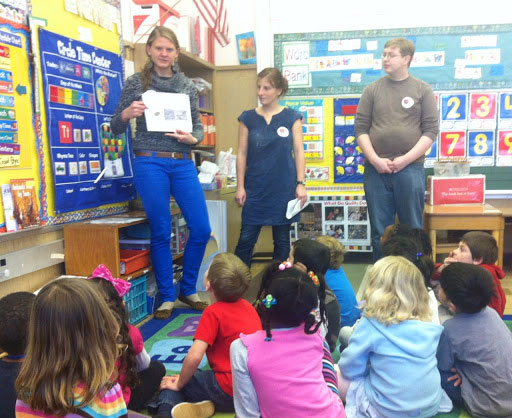Microbes, South Africa, and Science Outreach
March 2013
Seychelle has volunteered with BASIS for 4+ yrs. Her involvement has gone beyond classroom presentations to include the Steering Committee & Campus Coordinator positions. Here, she shares her journey in science & outreach.
Seychelle Vos has volunteered with BASIS for over 4 years but her involvement has gone beyond classroom presentations to include serving on the Steering Committee and recruiting new volunteers as a Campus Coordinator. This spring she will be leaving UC Berkeley to pursue a post-doctoral position in Molecular and Cell Biology. In her own words, she shares her journey in science and science outreach.

I was incredibly fortunate to have excellent science teachers during the course of my high-school career, who nurtured my scientific interests and encouraged me to pursue scientific studies outside of their classrooms. Thus, I began my stint in academic research as a high-school junior in a lab at the local university. I was fascinated by the work and this experience helped me to pursue a degree in genetics. During college, I realized how lucky I was to have had such wonderful teachers. Many of my colleagues loathed science merely because they did not understand the basic principles and struggled to learn the advanced material taught in our classes. It was evident to me that science education in most primary and secondary schools was inadequate to prepare students for university level discussions and resulted in a general lack of scientific understanding by the greater community.
As I was completing my bachelor’s degree, I sought out programs in which I could assist students in primary and secondary science courses. My goal was to encourage and excite some subset of the students about science, even if they did not choose to study science at the university level. The summer after graduation, I returned to my native South Africa, and taught students in township schools surrounding Cape Town physics, biology, and chemistry through the South African Environmental and Education Program (SAEP). The students I taught, for the large part, were poorly equipped for their high-school science classes. Their home lives were not the best and many had parents with little or no education. Although challenging, this experience was highly rewarding. I was encouraged by the small changes I observed in my students.
Upon starting graduate school, I volunteered in a Berkeley High math and science classroom. The students in this class were classified as at high risk for dropping out of school due to significant deficiencies in education. I quickly realized that my experiences in South Africa and Berkeley were very similar. Students from rough backgrounds lacking the knowledge of fundamental principles struggled to learn new concepts. It became evident to me that the curiosity and excitement found in younger students was somehow squashed as the students progressed. Lacking this curiosity, the students would often give up on math and science because they were “too hard”.
Fortuitously, I decided to write an article about the math and science outreach programs available in Berkeley for the Berkeley Science Review on campus after my first year in grad school. I interviewed Heidi Williamson, Bob Bergman, and some graduate student volunteers to learn more about Community Resources for Science. I was impressed with the organization of the program and the extent to which the program immersed itself in the local schools. I also liked that the program targeted students in younger grades, when they are still curious and think that science is cool. I started my own lesson shortly after I wrote the article. This lesson was aimed at a fourth grade audience and discussed ecology. Each classroom built a terrarium at the end of each lesson. I also assisted with a lesson with the neighboring lab (Alber Lab), “Germs and Your Body”, and then inherited the lesson after the original creators graduated or moved on with other jobs.
Classroom visits are inspiring and sometimes difficult. One of our hardest visits, but most rewarding, was visiting a bilingual Spanish/English kindergarten class. The teachers helped translate, but there were moments when the students were a bit lost. Once the students grasped the concepts they became excited and then shouted “Moco! Eeeewww!” (mucus). Each time I come back from a classroom visit, I am encouraged to go out again. Classroom visit days are special and can make me happy, even when my research is discouraging. I am glad that I have had the opportunity to be part of such a wonderful organization that affects so many students’ and teachers’ lives in the Bay Area.